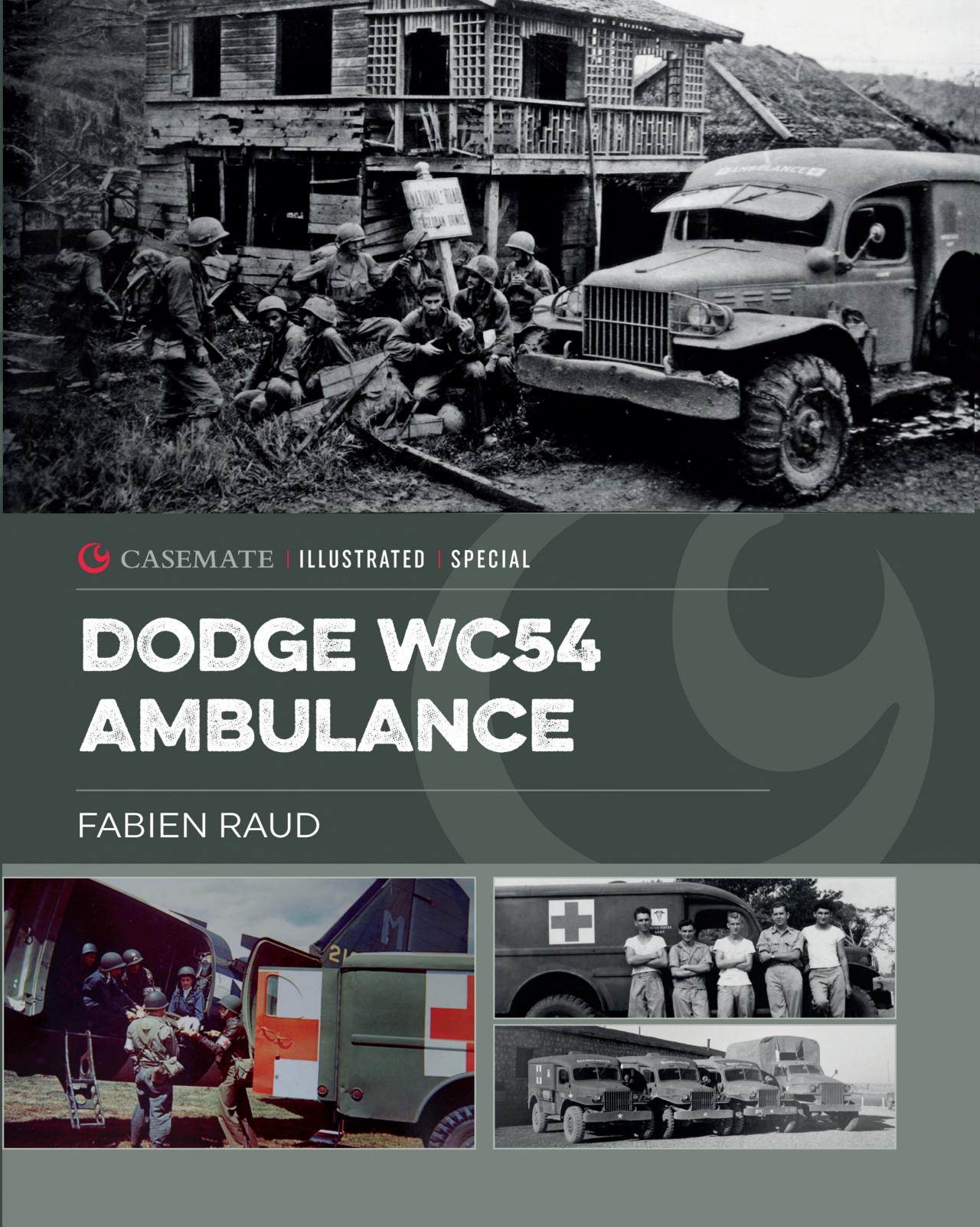Dodge WC54 Ambulance
Over 26,000 American Dodge WC54 ambulances served in all theaters of WWII. Fabien Raud’s attraction to these van-like vehicles led him to personally invest over 15 years in the restoration of a WC54 to a factory fresh condition. With translator Alan McKay, Raud shares his love for the vehicle and his authoritative knowledge of its details in this work, which overflows with crisp photography.
Dodge WC54 Ambulance is a handsome hardcover book. It is lavishly illustrated with over 450 color and black & white photographs. Raud begins with an introductory section which provides a short history of the ambulance’s development and an explanation of its manufacturing “Build Card” tracking system. This work highlights the critical role of the US Army’s Medical Department during WWII. Raud clarifies that the WC54 was designed to only transport wounded soldiers to field hospitals, not to administer first aid. In addition, he notes that the WC54’s, because of their utility, were also sometimes assigned to auxiliary, non-medical duties.
The book’s core is organized to mirror a vehicle’s restoration sequence, beginning with the chassis and running gear and ending with a depiction of the various marking schemes and how they were applied. The book concludes with a bonus section describing the WC54’s French service during the Cold War. Perhaps because of the need to manage the size of the work or because other references are available, little information is provided regarding the ambulance’s 230 cu. in. powerplant.
This work skillfully mixes the details of each component with historical drawings, black and white period photos, and sharp color images of the actual restored parts. The historical photos show clean stateside examples as well as weathered operational ones. The pictures have been taken from a variety of angles and in many service locations.
Raud’s personal knowledge and admiration for the WC54 flows off the pages. In one example, he not only describes how the vehicle’s leaf springs were built, but shows his reader how they were assembled, greased, and protected with covers. In another instance, he documents how the original sheet metal thickness for some chassis parts differed from later French modifications. Moreover, his description of the windshield wiper motor’s disassembly and reassembly is extremely rigorous.
The design of these Dodge ambulances was modified over the course of the vehicle’s production. Raud carefully points out these alterations, even if only part colors changed, by noting serial number ranges and dates. In one case, he points out a change to the steering wheel design, with a comparison of the versions. In another example, he describes the modifications made to the map table’s design and the subtle differences from the first edition. Every part of the ambulance is documented with original construction records and diagrams. One particularly interesting feature of the book is Raud’s articulation of the wide range of construction materials used in this WWII vehicle: steel, Bakelite, cardboard, linoleum, leather, weltcord, etc. He acknowledges that no records exist for some modifications required by wartime material shortages.
In addition to his careful description of how the ambulances were built in the factories, Raud also notes field modifications. He naturally points out variations in markings and paint colors, but also shows his readers improvised roof racks, mirror supports, tool racks, and alterations to the stretcher retention straps. Raud argues that no documentation exists for sirens being mounted on the ambulances but concedes that some crews may have installed them in the field.
Dodge WC54 Ambulance is a must-have reference for anyone considering the WC54 as a modeling or restoration subject. Its exhaustive detail will content even the most ardent rivet counter. Raud goes so far as to show that the screw head designs attaching some interior panels alternated every other screw. He includes a bibliography if more information is required. Modelers who seek to include a detailed engine in their builds will need to search out additional references for that element. Besides being useful for a modeling project, this work also provides a copious amount of information for diorama designs.
Fabien Raud’s Dodge WC54 Ambulance is an excellent reference for anyone interested in this important vehicle. It is produced with high quality and Raud is quite thorough in his documentation. With its excellent organization and wonderful photographs, this work is highly recommended. This book will inspire you to build a model of this iconic ambulance.
Special thanks go to Casemate Publishers for providing this book for review.












Comments
Add new comment
This site is protected by reCAPTCHA and the Google Privacy Policy and Terms of Service apply.
Similar Reviews